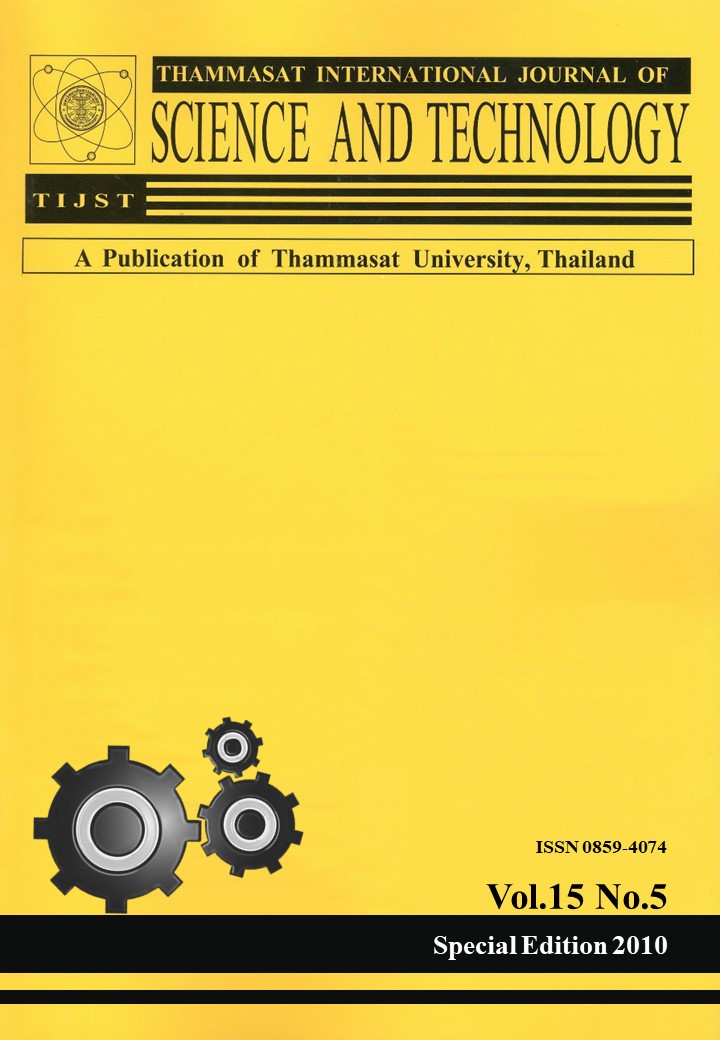A Study of Riboflavin Release from Chito-Oligosaccharide/ Poly (Vinyl Alcohol) Electrospun Nanofibrous Structures
Main Article Content
บทคัดย่อ
A study of riboflavin (vitamin B2) release from the nanofiber mats obtained from electrospinning process was investigated. The spinning solution was prepared from 3% chitooligosaccaride or water soluble chitosan, 13% PVA, and 0.004% riboflavin. Prior to applying the nanofiber mats, the structures underwent crosslinking either with GA vapor or TPP solution. The structures after soaking in TPP solution showed some degree of swelling, whereas, the structures after GA were still the same, the form of nanofibers with many beads. The release media chosen in this study were deionized water, NaCl solution, HCl solution at pH 1.5 and the solution of NaCl and HCl at pH 1.5. The average values of the release rate obtained in deionized water, NaCl solution, HCl solution, and NaCl and HCl solution for GA
crosslinked mats were 0.1276, 0.1655, 0.1619, and 0.14811/h respectively. For TPP crosslinked mats, they were 0.0986, 0.1484, 0.1070, and 0.1206 1/h, respectively. This implies that GA crosslinked mats release riboflavin more rapidly than TPP crosslinked mats. For both types of crosslinking, the release in NaCl solution was the fastest while the release in deionized water was the slowest. The mats seemed to withstand the dissolution in acidic solution better than in the salt solution.


